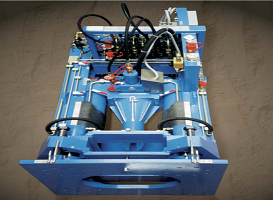Pipeline Replacement
Application
Pipeline Replacement is applicable to all pipelines and ducts including networks which have both gravity and pressure operating regimes. It can be utilised to replace water mains, gas mains, oil pipelines, industrial pipelines, rising mains (pressurised sewer mains), sewers, ducts and culverts.
The application of any particular replacement technique is influenced by several parameters that include the system capabilities, the location and construction of the existing asset, ground conditions and the design of the replacement asset. Some of the key aspects that need to be considered are:
- Depending on the system used, replacement operations can be applied over a range of existing pipe diameters and varying lengths.
- The techniques may be limited in application by the prevailing ground conditions i. e. some techniques may not function in specific soil conditions or where pebbles, stones and boulders are present. When planning a pipeline replacement operation, a full ground investigation should be undertaken that also includes the position of any other utility apparatus that is in close proximity to the pipe to be replaced.
- Some techniques are limited by the construction of the pipes that are to be replaced and depend on whether they are made of brittle or ductile material. These limitations will be addressed within the following sections that cover the individual techniques.
- It is also possible with most of the pipeline replacement systems to upsize the existing pipe to a greater diameter and consequently improve the operating capacity. Up size replacement is dependant on the ground conditions being suitable.
- Some pipe replacement systems may create interaction between the pipeline being replaced and other nearby utilities and services through ground movement and vibration. If the adjacent utility assets are too close to the asset being replaced their operation and structural integrity may be affected by the replacement process. Interaction of this type should be avoided wherever possible.
Benefits
The benefits of pipeline replacement systems include:
- The replacement pipeline utilises the bore of the existing asset.
- Upsizing can be achieved to increase capacity or in the case of ducting make available more space for other services.
- Minimal footprint requirements to complete the operation as the systems can be utilised through relatively small access and reception pits or existing pipeline accesses such as chambers and manholes.
- Minimal excavation results in reduced disposal of excavated material, lower requirement for imported backfill material leading to fewer traffic movements with an overall reduction in the carbon footprint of the works
- The techniques can replace ageing networks relatively quickly and efficiently, with minimal interference to customer supplies.
- Reduced time on site limits traffic disruption and inconvenience to the general public.






